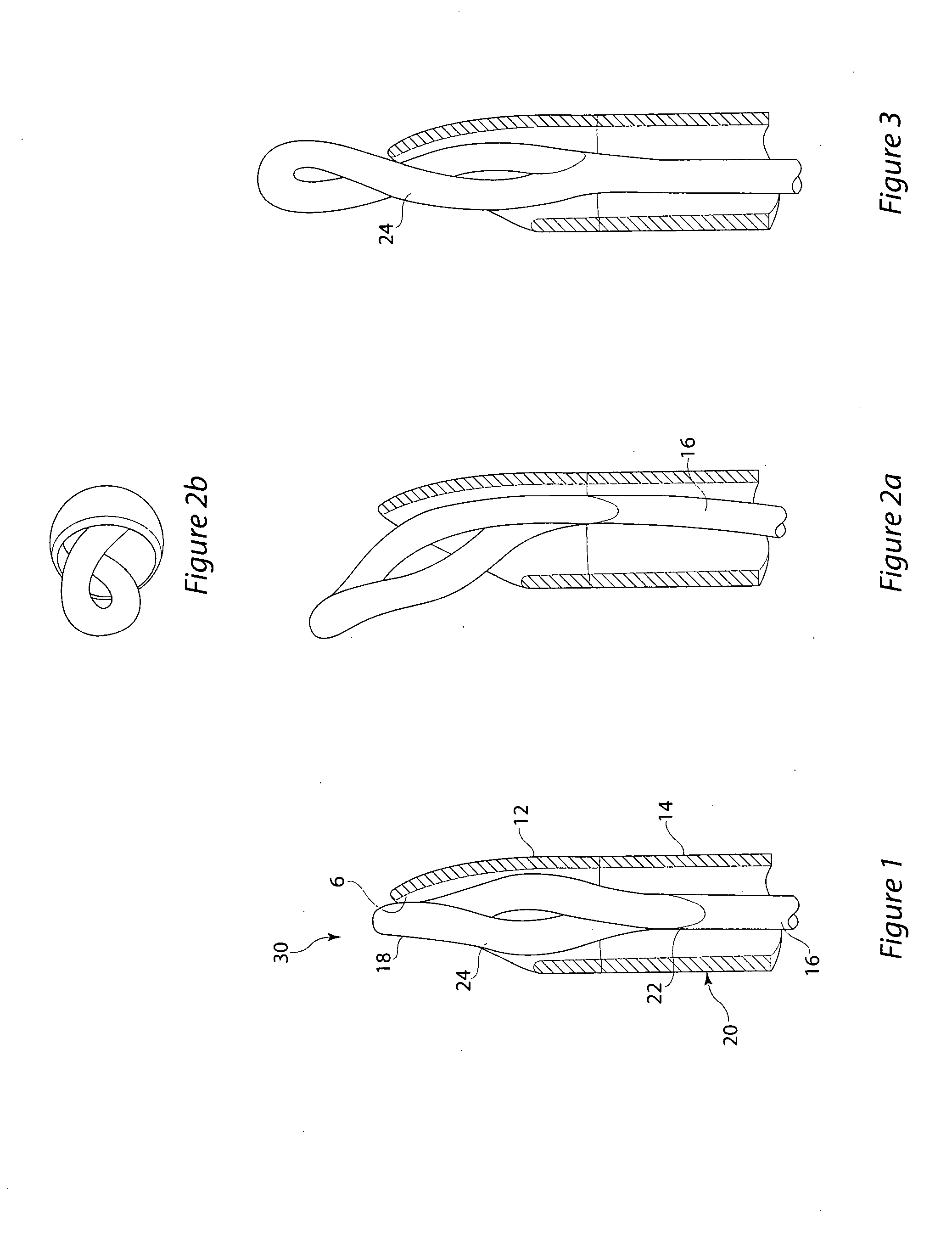Chronic total occlusion (CTO) removal device
a total occlusion and removal device technology, applied in the field of occlusion removal devices, can solve the problems of difficult removal of ctos, non-uniform ctos and other occlusions, pain or life-threatening to a human patient or an animal, and achieve the effect of reducing increasing the effective stiffness of the device, and allowing the loop to be varied
- Summary
- Abstract
- Description
- Claims
- Application Information
AI Technical Summary
Benefits of technology
Problems solved by technology
Method used
Image
Examples
Embodiment Construction
[0028]FIGS. 1 to 6 show a distal end 100 of an occlusion removal device 10 comprising a catheter 20 and an inner component 30. The catheter 20 comprises a metallic, radiopaque, distal opening 12 and a polymeric catheter sheath 14. More generally, the distal opening 12 and the catheter sheath 14 may be formed from other materials (as opposed to a metallic distal opening 12 and a polymeric catheter sheath 14). In alternative embodiments, the distal opening is non-metallic and is provided with one or more radiopaque markers (not shown but of a type common in the art).
[0029]As shown particularly by FIGS. 1 to 4, the tip of the distal end 100 of the catheter 30 is pre-curved. By pre-curved, it is meant that the distal end 100 of the catheter 20 is curved at the time of manufacture or final formation and thus before the catheter 20 is inserted into a body lumen. The pre-curved portion may be adjacent to the distal opening 1, or may include the distal opening 1. The degree of curvature may...
PUM
 Login to View More
Login to View More Abstract
Description
Claims
Application Information
 Login to View More
Login to View More - R&D
- Intellectual Property
- Life Sciences
- Materials
- Tech Scout
- Unparalleled Data Quality
- Higher Quality Content
- 60% Fewer Hallucinations
Browse by: Latest US Patents, China's latest patents, Technical Efficacy Thesaurus, Application Domain, Technology Topic, Popular Technical Reports.
© 2025 PatSnap. All rights reserved.Legal|Privacy policy|Modern Slavery Act Transparency Statement|Sitemap|About US| Contact US: help@patsnap.com



